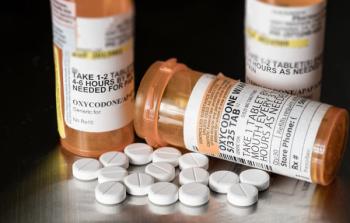
Implications of the COVID-19 Pandemic on Real-world Data and Research

Matthew Reynolds, PhD, vice president of real-world evidence at IQVIA, discusses findings of a recent paper with the National Pharmaceutical Council on how COVID-19 affected real-world data and research, as well as implications for future studies.
As COVID-19 has led to significant changes in health care utilization and delivery, accounting for these factors is critical to optimize research and leverage high-quality real-world data, said Matthew Reynolds, PhD.
Q: With COVID-19 causing disruption in routine patient care nationwide, what impact has the pandemic had on how we collect and analyze real-world data?
Reynolds: The pandemic has had a pretty large impact on our
I think the big focus there with regards to the impact and what we need to be aware of is the changes in medical provision patterns, the lack of access of care, the change in the way that some of the care was provided—telehealth vs in-person care.
I think a lot of that varied tremendously from the prepandemic period, and even within the pandemic period, we saw major drops and changes in access to care in say the first 3 months, from March to June, and then an increase back close to normal levels, but it never quite got to normal levels. Even today, we're still a good 10% to 20% below outpatient visits, hospital visits.
So, I think understanding that and basically thinking through your research questions individually, the data sets that you're using, how care changed for your patients of interest and in those settings, there’s not going to be a one-size-fits-all solution, but there are going to be common themes, again, around patterns of care, types of care used, the types of patients who got care vs those who didn't that need to be kept in mind as we design studies and leverage this RWD.
That telehealth piece, in lieu of actual in-person visits, may also play a part in the effectiveness or the usage, and there may vary tremendously by therapeutic area, by disease type, by location, potentially by patient demographics as well. So, something to keep in mind.
You mentioned the collecting, and again, while we don't delve deep into that, I will note that the collection of RWD was definitely impacted as well. When clinical sites are closed, patients can’t come in for their routine studies, for existing studies to have data collected. So, some of the data is missing. Other data may be collected remotely, and some of which may not be easily collected remotely or different as it's collected remotely.
For new studies—very difficult to get sites when they're fighting a pandemic to focus on a study that's not COVID-19–specific to bring new patients in. Their attention was focused elsewhere. And then, even once we got back to normal behaviors here, there still was heavy competition for those studies that we would have been doing non–COVID-19 ongoing from a real-world perspective.
There's now competition with COVID-19–specific studies that tended to get priority, both from IRBs [institutional review boards] as well as from clinical staff and patients. So, big change in the way that data was collected, but also that resulting data needs to be thought through very well with regards to how it can be applied to the same research questions we were asking prepandemic.
Newsletter
Stay informed on drug updates, treatment guidelines, and pharmacy practice trends—subscribe to Pharmacy Times for weekly clinical insights.















































































































































































































